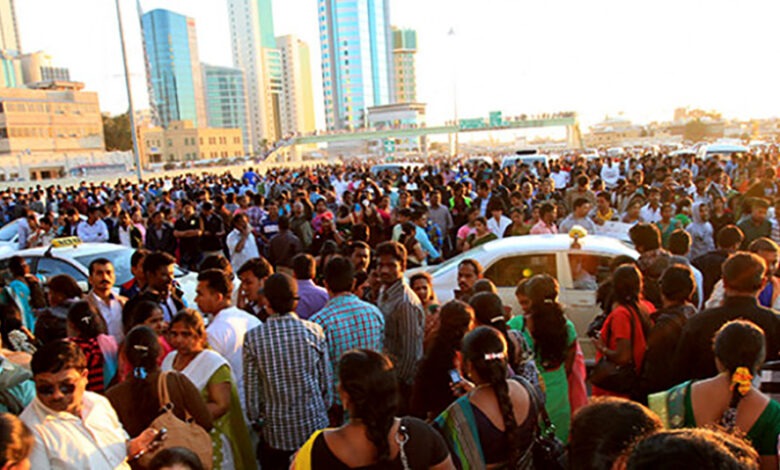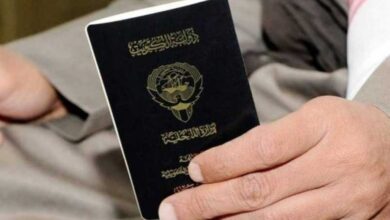Seven in ten people in Kuwait are expatriates
The statistics showed that the number of Kuwaitis increased to 1,559,925 by the end of June 2024, up from 1,545,781 on January 1, representing a rise of 14,144 over six months, and now constituting 31.7 percent of the total population.

Latest demographic statistics from the Public Authority for Civil Information (PACI) shows Kuwait’s population reaching 4,918,570 by the end of June 2024, increasing by 5,299 from the 4,913,271 individuals on 1 January of this year.
The statistics showed that the number of Kuwaitis increased to 1,559,925 by the end of June 2024, up from 1,545,781 on January 1, representing a rise of 14,144 over six months, and now constituting 31.7 percent of the total population.
Meanwhile, during the same time period, the number of expatriates decreased to 3,358,645 from 3,367,490 on January 1, reflecting a drop of 8,845 individuals, leading to expatriates now representing 68.3 percent of the demography.
The statistics revealed a breakdown percentage of the total population, with Kuwaitis making up 32 percent of the demography, followed by Indians (21%), Egyptians (13%), Bangladeshi (6%), Filipinos (5%), Nepalese, Saudis, Sri Lankans, and Syrians accounting for 3 percent each in the total population. Other nationalities together totaled the remaining tionali, and other nationalities making up the remaining 11 percent of the population.
The PACI population data also showed that the total number of workers employed in the public and private sector amounted to 2,178,008, of whom 516,397 were employed in the public sector, representing 24 percent of the total workforce. On the other hand, 1,661,611 individuals, representing 76 percent of the workforce, were employed in the private sector.
The data indicated that employed individuals make up 44 percent of the total population, with Indians representing the largest group at 24.2 percent, followed by Kuwaitis (21.9%), Egyptians (21.7%), Bangladeshis (8.5%), Nepalis (3.9%), Pakistanis (3.2%), Syrians (3%), Filipinos (2.9%), Jordanians (1.4%), Saudis (1.2%), and other nationalities together making up at 8.2 percent of the workforce.
The figures also disclosed that Kuwaitis constitute the largest percentage of workers in the public sector at 78.31 percent. Percentage of other nationalities in the government sector included, Egyptians (7.21%), Indians (4.36%), Saudis (2.09%), Bangladeshis (1.58%), Pakistanis (1.08%), Syrians (1%), Jordanians (0.71%), and other nationalities accounting for the remaining 3.1percent of workers in the public sector.
In the private sector, the statistics revealed that Indians have the highest contribution rate at 30.4 percent, followed by Egyptians (26.6%), Bangladeshis (10.6%), Nepalis (5.1%), Kuwaitis (4.3%), Pakistanis (3.8%), Syrians and Filipinos (3.6 each), Jordanians (1.6 %), and Saudis (0.9%). Other nationalities accounted for the remaining 9.9 percent of the private sector workforce.
PACI data also revealed that among household workers, Indians make up the highest percentage at 43.8 percent, followed by Filipinos (21.1%), Sri Lankans (15.4%), Bangladeshis (11.1%), Nepalese (4.5%), Ethiopians (1.2%), Beninese (0.9%), Malians (0.%), and Indonesians and Malagasy accounting for 0.2 percent of household workers.
Segregating the workforce data based on nationalities reveals that Indians came in first spot accounting for 30 percent of the workers, followed by Kuwaitis and Egyptians, each with 16 percent. Bangladeshis (9%), Filipinos (8%), and Sri Lankans (5%), Nepalese (4%), Syrians and Pakistanis (2% each), and Jordanians (1%). Other nationality workers accounted for the remaining 7 percent of the workforce.












